Update - February 18, 2025: Our Elegoo Centauri Carbon review is online.
Elegoo has taken its sweet time bringing the Centauri Carbon out since first announcing it in the summer of last year. It has taken so long that even Prusa managed to surprise announce and then begin shipping its Core One before the CC (as we’ll refer to it from here on out) is even available to preorder. Truly, the world is a stranger place in 2025.
So how exactly does this slick grey box stand out? In a (bland) word, it’s refined – shockingly so for its $299 price tag. And there’s one standout feature that other printers cannot match in its uber-fast heating print bed.
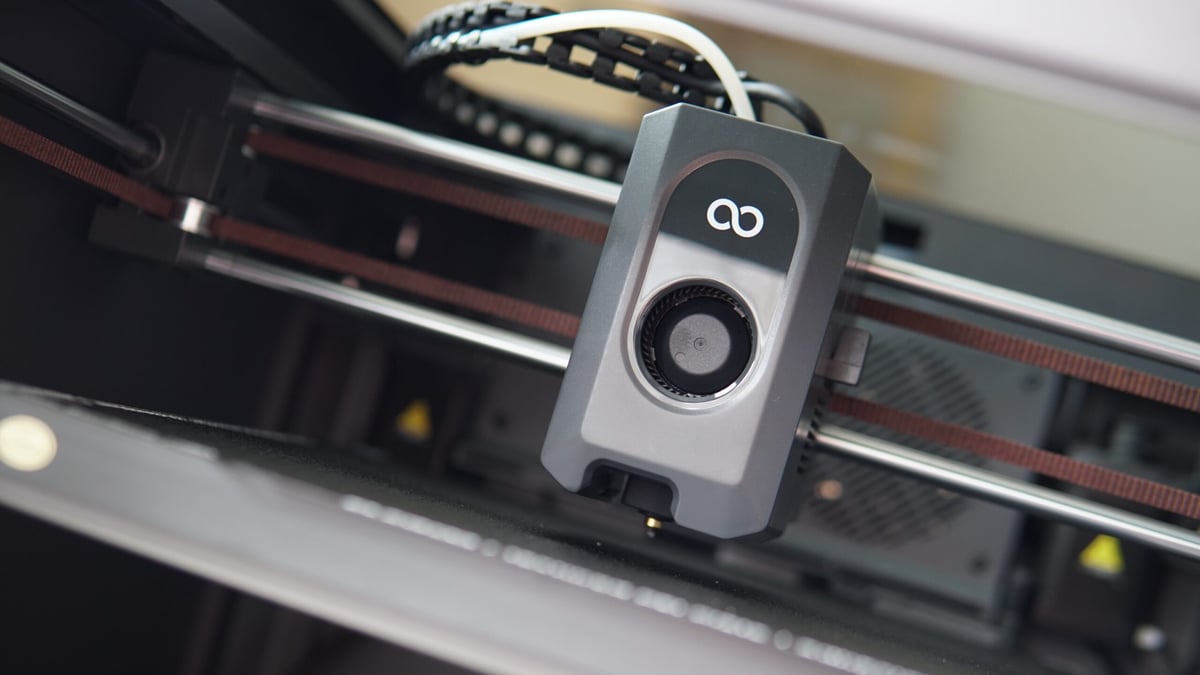
Throughout its various marketing materials, Elegoo hadn’t quite caught our eye with a convincing USP for the CC, with standard specs across the board (bar the insane 1000W bed) for its then-hypothesized $500 price tag. This troubled us before we got our hands on the printer, expecting it to be a forgettable also-ran launching too late with features too spartan to have any chance against the crowding competition. Discovering Elegoo’s launch price of $299 reframed our thinking about the printer.
Having run the Centauri Carbon for the better part of a week, we’re happy to report that this printer’s general appeal resides in it being a lot closer to the quality and feel of Bambu Lab’s X1 series, minus some of the smarts, for a fraction of the cost. That and the bed – really can’t overstate how crazy it is seeing the bed heat up nearly as fast as the hot end.
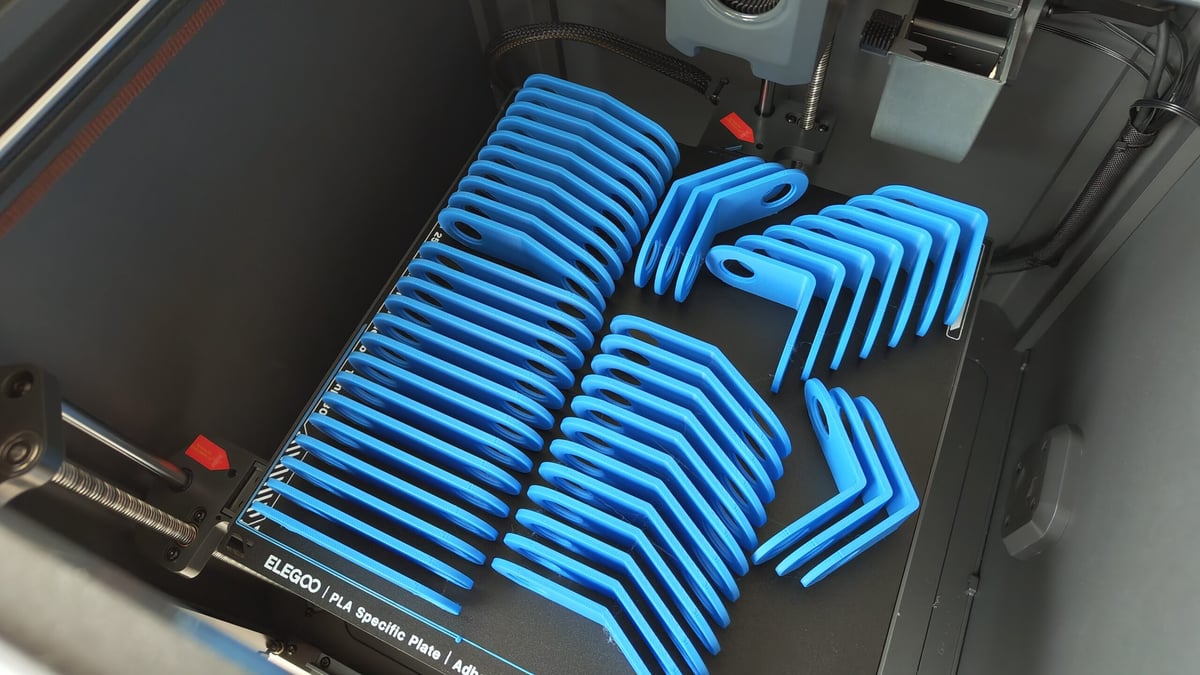
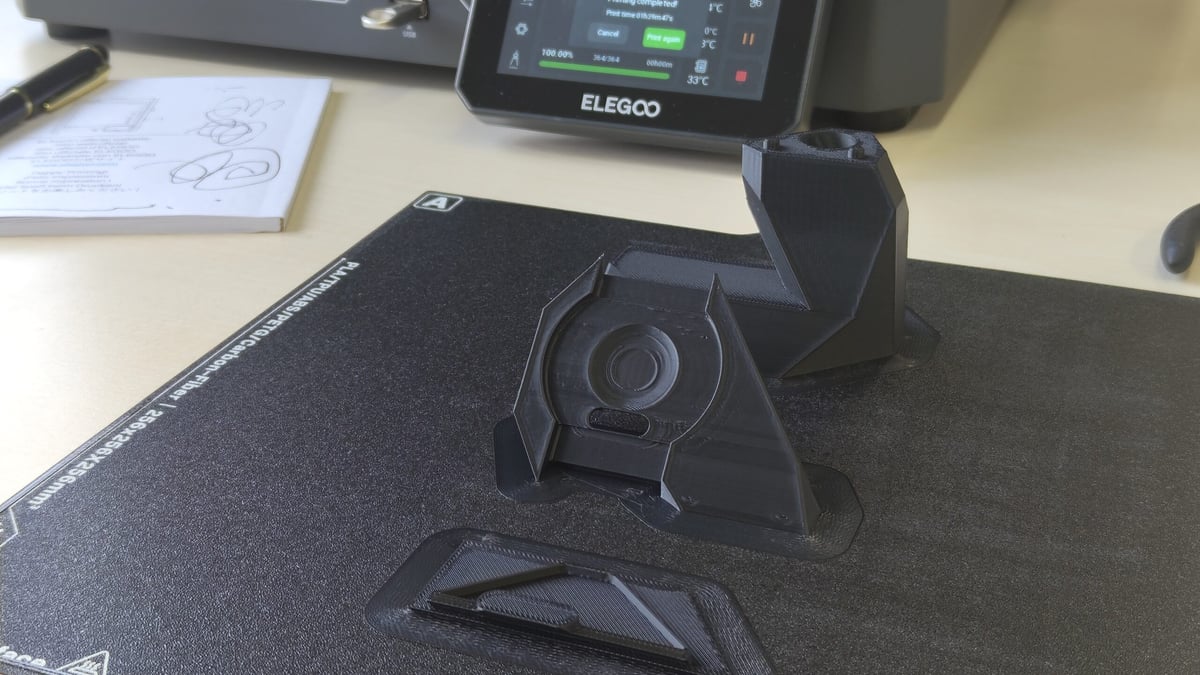
The basic stats are a 256 x 256 x 256 mm print volume, with a maximum hot end temperature of 320 °C and heated bed of up to 110 °C. A controllable exhaust fan with filter also offers some small means to combat the smell from printing and could help you regulate the chamber better. The printer can tell you the chamber temperature, though there’s no direct means to control this. An auxiliary cooling fan at the rear of the chamber can blow more air at the print if the printheads’ dual-shrouded fan needs some support.
Elegoo says the print bed supports up to 1000W (at 220v,) which can bring the print surface to printing temperature about as quickly as the printer can perform its other pre-flight checks and hot end heating. This makes a noticeable impact on how quickly it can start a print, mostly when you opt not to perform bed leveling. In testing we didn’t find it necessary to repeatedly level – it holds over time.
You have two print bed surface options out of the box, with Elegoo’s stock print bed a dual-sided metal sheet with the rough textured “Side A” serving as a general purpose PLA, ABS, PETG compatible sheet, and the slightly smoother “Side B,” being a PLA-specific extra grippy bed.
Spool placement is considerate and easy to reach, and requires no handling of the printer to change filament, while the filament sensor just lets the filament pass through – no internal edges or ledges to catch on. USB placement is front and center, right next to the display, and handily accessible. A note on the display: it’s attached using a flat flex cable, which can be delicate and easily broken.
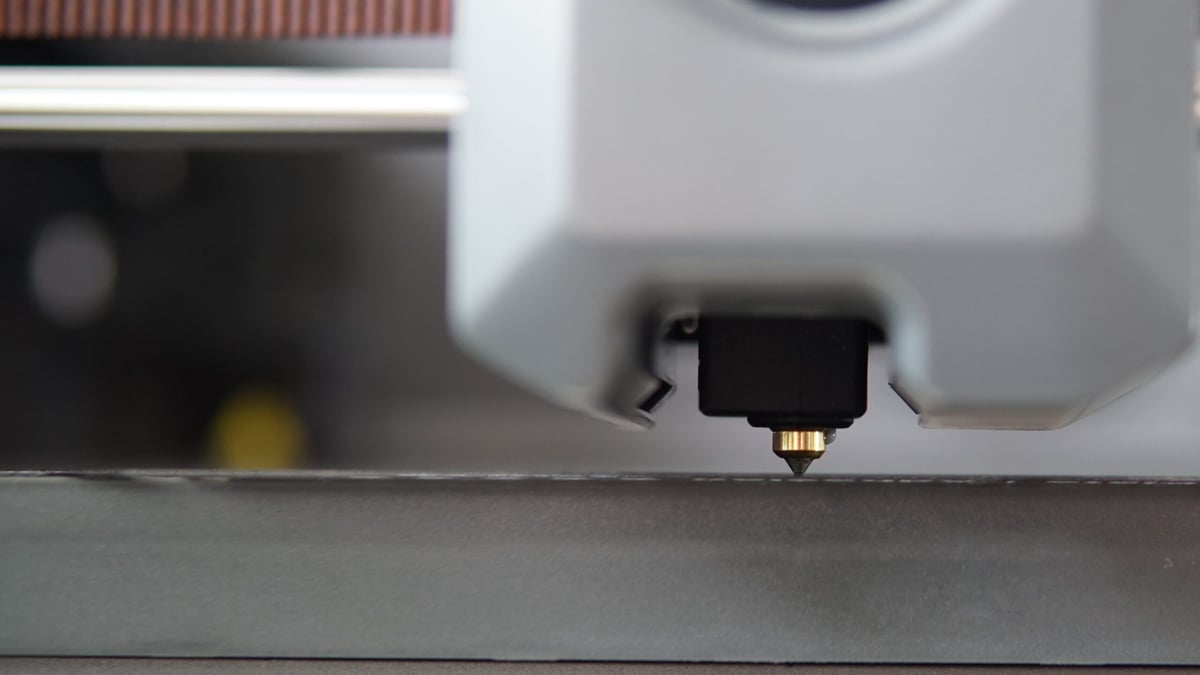
A hardened steel nozzle is provided as standard, giving you wide material options out of the box. The door and lid are glass, and the side panels metal. All are easily removable, opening the path to modding and customization. A silicon nozzle cleaning brush is situated near the small purge material chute.
Yep, the Centauri Carbon uses a filament cutter for material changes, ensuring a clean removal and reducing the chance of accidental blockage. This does mean that the printer will purge a little at filament change, thus creating the purge “poop” that’s so prevalent with single-nozzle multi-material systems. Don’t confuse the two, though. It creates “poop,” but it’s not wasteful like a multicolor printer.
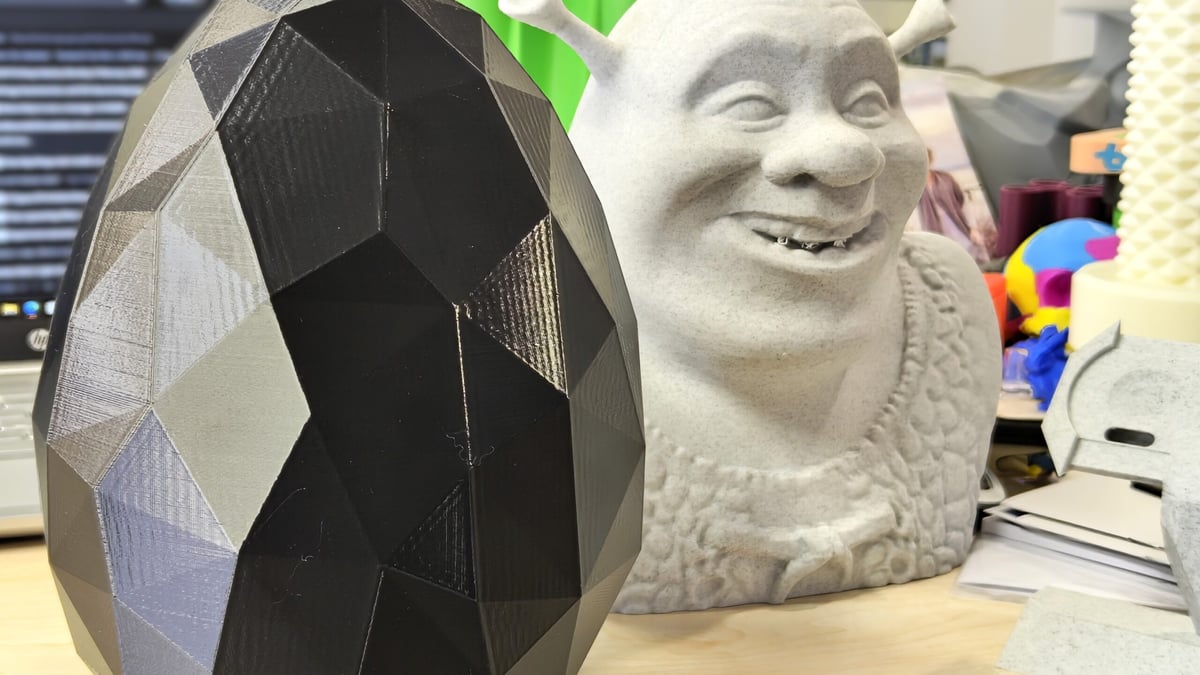
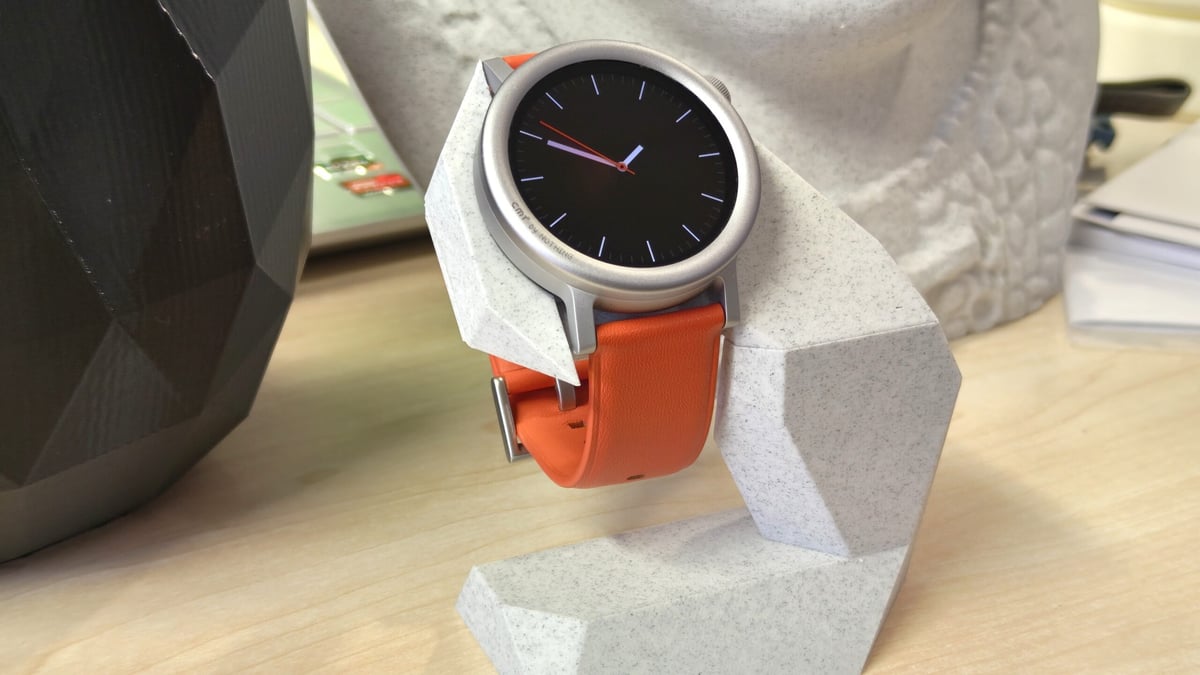
In the printing, we’ve found decent all-round performance with the Centauri Carbon pulling off full-plate prints of thin objects, to large volume-spanning prints with no obvious issues. We do see vertical fine artifacts (VFAs) show up on glossier filaments, which may bother some folks. Elsewhere, the Centauri Carbon has struggled with the Scandic Plate overhang torture print; though this early in our testing we can’t say whether the fault lies with the printer or slicer – Elegoo Slicer, which is based on OrcaSlicer – or something obvious and dumb we’ve overlooked to this point.
For now, the Elegoo Centauri Carbon has impressed us, and we’ll be focusing on its more exotic qualities – chamber heating, and its ability to handle hotter, tougher materials – in further testing, as well as rooting out whether these VFAs are repeatable and manageable.
License: The text of "Elegoo Centauri Carbon Hands-On & First Impressions" by All3DP is licensed under a Creative Commons Attribution 4.0 International License.
CERTAIN CONTENT THAT APPEARS ON THIS SITE COMES FROM AMAZON. THIS CONTENT IS PROVIDED ‘AS IS’ AND IS SUBJECT TO CHANGE OR REMOVAL AT ANY TIME.
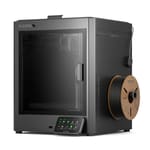
 Stay Informed, Save Big, Make More
Stay Informed, Save Big, Make More